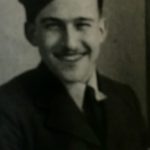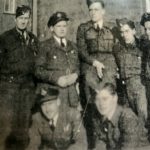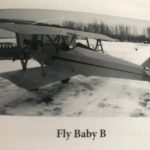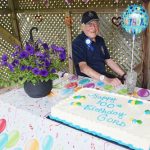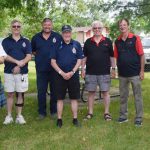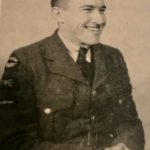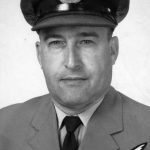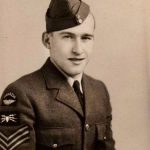Gord Standing was born June 23, 1921 in Ottawa. His father was a city fireman, so Gord remembers that the Great Depression was not as difficult for his family as it was for so many others. He had a typical childhood from the time; Gord played ball and went swimming and cycling and fishing with his friends, and he attended several schools, and worked on the family farm. He also developed an interest in amateur radio and learned Morse Code, and when the war came along that proved to be his ticket into the RCAF, and Gord joined up on February 2, 1940. He immediately went into training, and attended the No. 1 Wireless School in Montreal, and by September he was overseas, thrust into the middle of the Battle of Britain. He was at first a wireless instructor for air crews, but when those jobs were given to the WAAFs, Gord found himself in a holding unit, bound for Canada and retraining in the BCATP. He was sent to several training centers over the next year, earning his bomb aimer’s wing. By this time, it was 1944, and Gord was sent back to England. He went to an operational training unit, where the crew learned their way around Wellington and Halifax bombers, before being attached to 425 Squadron. Gord flew 29 combat missions while there, though the crew was credited with 30, and they dealt with the pressure and dangers of those missions, including flak, fighters and weather. After completing his rotation, Gord was transferred to another squadron and shipped back to Canada in short order, where he learned that he’d be in training for the Pacific War. The atomic bomb stopped that process, and Gord was demobilized and headed into civilian life. In 1952 he made the decision to reenlist, eventually ending up as one of the new breed of RCAF radar specialists, stationed along the Pine Tree Line of the 1950s. He retired from the military in 1968, settling into the rhythms of family life. Crestwood students were lucky to interview Gord via zoom in August 2021.
Videos
Click next video below to keep watching
